
Past and Present at the 17th Thessaloniki Documentary Festival
Located in Greece’s northernmost region of Macedonia, Thessaloniki used to be a vibrant multicultural city under the Ottoman Empire, with Jews, Muslims and Christians speaking in Greek, Turkish, Slav-Macedonian/Bulgarian, Vlach, Ladino, among other languages. Annexed to Greece in 1912, it became gradually Hellenicised, first with the exchange of populations in the 1920s, and later because of the Holocaust, which all but eradicated the city’s Jewish population. This year, the city’s Jewish history was explored in a double-bill of medium-length documentaries. Directed by the local filmmaker Stella Papastefanou Memories and Songs focused on Jewish survivors from Thessaloniki who reminisced about their endangered Spanish-based language, Ladino, and its old songs. Following Shira’s Journey: A Greek Jewish Odyssey, on the other hand, was made by Australian filmmakers Carol Gordon and Natalie Cunningham with more explicitly educational aims and in response to the relative dearth of information on the history of the Greek-Jewish community.
This was my third visit to the Thessaloniki Documentary Festival (TDF) and, this time, I spent the first three days of my stay with a colleague and friend from the US who had just completed jury-duties at a film festival in Tel Aviv. We watched these two Jewish-history films together, and the next morning we went on a tour of the city’s Jewish and Ottoman monuments led by the excellent tour-guide Konstantinos Sfikas. For, behind its densely built façade, there remain many traces of the city’s multi-layered past. The festival itself takes place in two cinemas in the magnificent Aristotle square – designed by the French architect Ernest Hebrard in 1918 after the great fire of the previous year eradicated most of the city’s dwellings. Named Olympion after the stunning views of Mount Olympus that can be seen on a clear day, the festival’s main building and cinema is at the heart of the square. Four more cinemas in converted warehouses at a nearby pier house the rest of the festival screenings. This is the site of TDF’s parent festival too, the Thessaloniki International Film Festival (TIFF), Greece’s main festival since 1960. TDF was founded in 1999 by Dimitris Eipides, who has led it continuously since then, with the dual aim of promoting Greek documentary production, but also to expose the city’s audiences to some of the best documentary films from around the world.
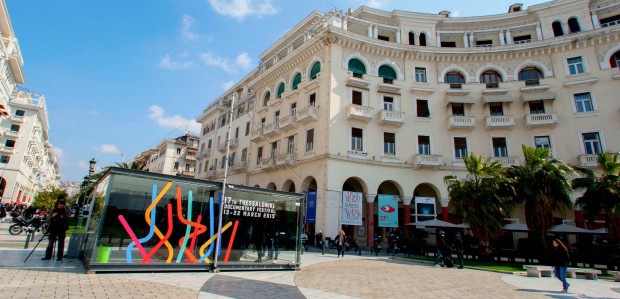
Aristotle Square and Olympion
The festival’s programme comprised of 168 films, 63 of which were Greek, shown over 10 days (13-22 March 2015). TDF is not competitive, but it offers awards by the audience as well as by the critics (two FIPRESCI awards: one for international premieres and one for Greek documentaries), Amnesty International and the WWF. The festival’s emphasis is mostly in engaging the city’s audiences, and in acting as a springboard for the national release of films. But there is also an industry-orientated market section that includes a “Docs in progress” of almost-completed films that saw seven films in competition this year for a post-production prize, and a pitching forum run by the European Documentary Network (EDN) the winner of which receives development funds. At 53,631 admissions, audience attendance this year slightly exceeded its peak of two years ago. The very reasonably priced tickets and loyalty schemes facilitate cinephilia and audience engagement with socio-political issues through documentary. The established reputation of the festival and the network of support by partners and institutions also secured the smooth running of the industry events. It was a relief to see that the further budget cuts experienced this year did not undermine the festival’s popular appeal, nor its role in fostering new projects.
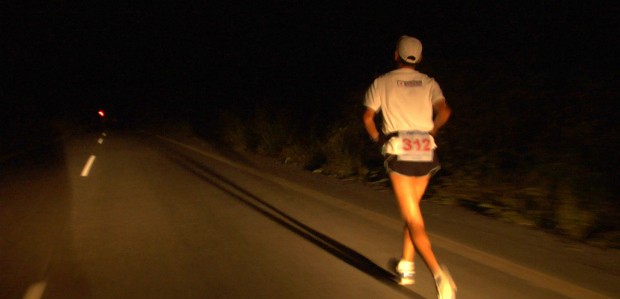
Hail Arcadia
Of the Greek films I watched, two stood out: Filipos Koutsaftis’ Hail Arcadia and Kimon Tsakiris’ The Archaeologist, both of which foreground tensions between preserving material (and cultural) traces of the past and embracing modernity. Hail Arcadia, which won the FIPRESCI award for a Greek film, continues along the thematic and stylistic lines established by the director in his highly acclaimed Mourning Rock (2000). With a continuous poetic voice-over in his own warm and calming voice, Koutsaftis takes us through a meditative journey in contemporary Arcadia, a mountainous region at the centre of Greece’s Peloponese. The film alludes to the mythical view of ancient Arcadia as a utopian space of pastoral unity with nature, and sets up subtle contrasts with the realities of the contemporary depletion of the countryside in the region, the loss of traditional connections to the land, and the co-existence of the ancient and the modern in such places as Arcadia’s Tegea. In doing so, Koutsaftis creates an elegiac celebration of the region, and through it, of an almost mystical vision of Greece.
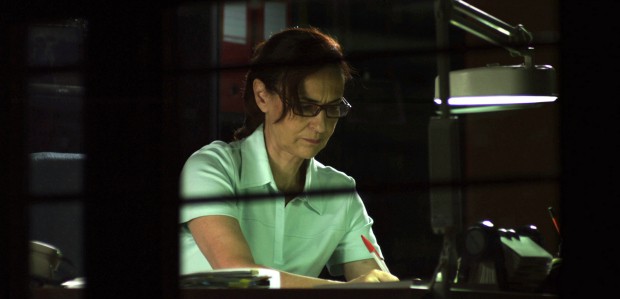
The Archaeologist
Tsakiris’ The Archaeologist is a portrait of Georgia Karamitrou-Mendesidi during her last desperate attempts to complete the dig of an archaeological site before the area gets flooded by the waters of a newly-built electrical dam. Using beautiful cinematography and the de-facto suspense of the situation, the film centers on this committed archaeologist in order, not only to highlight her lonely plight, but also to shed light to some of the broader problems and dysfunctions of contemporary Greece. Without adopting simplistic positions, The Archaeologist explores the tensions between, on the one hand, respecting the historical past and natural environment, and, on the other, responding to the needs of development and energy production.
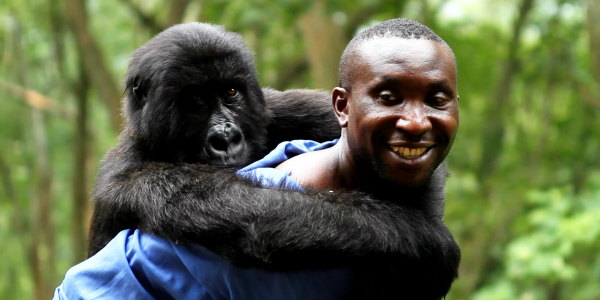
Virunga
A similar set of tensions between environmental conservation and oil exploitation are explored in Orlando von Einsiedel’s Oscar-nominated and Netflix-funded Virunga which openly denounces the British company Soco’s attempts to exploit the Congo’s largest national park, Virunga, for oil extraction. The film focuses, on one hand, on the efforts of those based in the park to protect it against poachers and gunfire (notably the Belgian director Emmanuel de Merode and the keeper of the orphan gorillas, Andre Bauma) and, on the other, on young journalist Melanie Gouby who seeks to expose Soco’s illegal operations with hidden cameras. Combining the thrills of a reality-tv style investigative journalism and the stunning cinematography and emotional attachment of nature documentaries, the film makes a very complex historical and political situation appear straightforward by assigning clear roles of heroes and villains. Its clear moral structure and the charisma of most of its central characters, including the gorillas, makes it narratively very effective, and its activist drive, in so far as it asks for support of the park, empowers the audience in feeling they can contribute towards a positive change. It seems no coincidence that the film won the audience award in Thessaloniki.
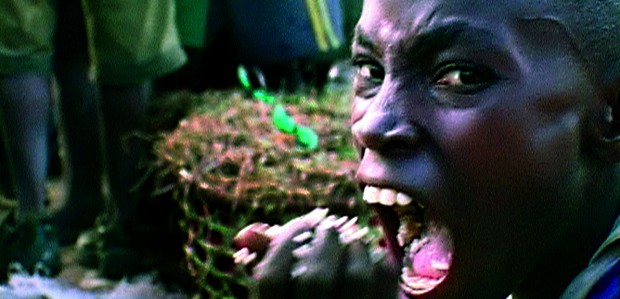
Darwin’s Nightmare
Also set in Central Africa, but offering a far darker, deeper and more pessimistic outlook are three of the films by Hubert Sauper that were shown as part of a tribute to his work in Thessaloniki. Kisangani Diary (1998) presents a haunting journey in the ‘heart of darkness’, as Sauper and his travel companion find themselves in the midst of the horror of war in the jungle of the Congo. Little, if anything, is offered to the spectator by way of appeasement here. Similarly, Sauper’s Oscar-nominated Darwin’s Nightmare (2004) presents a slowly unfolding account of environmental destruction, economic exploitation and arms dealing focused around Lake Victoria in Tanzania. Sauper does not sugar the pill; the effects of near-starvation, children’s substance abuse and Western hypocrisy are shown uncompromisingly. His latest film, We Come as Friends (2014) zooms in on Sudan and unpacks the colonial exploitation still in place. Sauper seeks to expose the hypocrisy behind the supposed good intentions of (neo)-colonial powers, by subtly highlighting a number of historical parallels, not least the supposedly enlightening discourse of Christian missionaries who claim to be bringing the ‘light’ while ultimately subjugating Africans to European and Western values and interests. Structured as a series of arrivals from Sauper’s self-made airplane in otherwise out-of-reach places, such as oil-fields controlled by the Chinese or the Americans, the film seeks to raise more questions than offer answers. As a white man and a European, Sauper considers his films ultimately to be more about Europe than about Africa – about the responsibility, the duplicity, the dark side of the West that is not easy, if indeed possible, to atone.

Kapitalism – Our Improved Formula
Romanian director Alexandru Solomon was also offered a tribute in Thessaloniki. Solomon’s films explore his country’s past and present, often finding parallels, continuities or connections between the communist times and now. In Kapitalism – Our Improved Formula (2010), the only film of his that I managed to see, we are offered profiles of the Romanian super-rich that expose their arrogance and their very close links with the Ceaușescu regime. Blending interviews with a caustic voice over and playful claymations, Solomon’s approach is mildly humorous. The film’s good pace and revelatory content render it engaging and informative, while its stylistic roughness suits its ironic and polemical nature.
Because of its non-competitive character, TDF shows international premieres alongside already critically acclaimed films side-by-side. The eight sections of the international programme – Views of the World, Stories to Tell, Recordings of Memory, Portraits: Human Journeys, Habitat, Human Rights, Society, Music – offer loose thematic connections among films. In Recordings of Memory, for example, Joshua Oppenheimer’s multi-award winning The Look of Silence, was shown alongside critically acclaimed The Salt of the Earth (Juliano Ribeiro Salgado and wim Wenders), Night will Fall (André Singer) but also Magnus Gertten’s Every Face has a Name, which premiered in Thessaloniki and won the FIPRESCI award.
I watched a number of powerful films in Thessaloniki – some life affirming, others deeply disturbing. Nancy Kates’ HBO funded Regarding Susan Sontag is a very illuminating and enjoyable portrait of this very influential and inspiring American intellectual. In Les Blank’s and Gina Leibrecht’s How to Smell a Rose: A visit with Ricky Leacock in Normandy we get an intimate portrait of the English-born American cinematographer who helped revolutionise documentary filmmaking in the 1960s– and there is a fair bit of cooking (and garlic too) for Les Blanc fans in the film too. Nick Broomfield’s Tales of the Grim Sleeper focuses on accounts about an alleged serial killer of women in South Central LA as a means of exposing a community’s collective silence as well as the – implicitly – race and class motivated police neglect. Set in Chicago in a similarly disadvantaged community, Kim Longinotto’s Dreamcatcher is a highly moving but also politically punchy portrait of a former prostitute and volunteer social worker offering much needed support to vulnerable sex-workers and abused teenagers. In the harrowing La Prenda/The Pawn Jean-Cosme Delaloye interweaves two parallel but also contrasting stories of victims of rape and kidnapping in Guatemala foregrounding the fact that 98% of such crimes go unpunished.
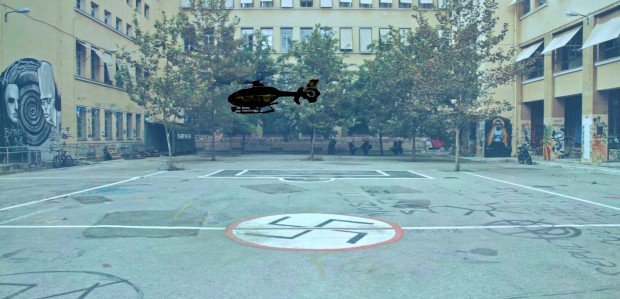
Crisis Document: A Survival Guide
The Greek socio-political crisis of the last five years has also been addressed in a number of films shown at TDF. Yorgos Avgeropoulos’ Agora: From Democracy to the Markets presents an analytical account of the crisis that brings together footage from the streets, together with interviews with politicians, analysts, businessmen and citizens. Aris Chatzistefanou’s publically available and crowd-funded Fascism, Inc., offers a hard-hitting exploration of the relationship between fascism and capitalism, triggered by the political rise of the extreme right. A round-table on the creative responses to the crisis followed the screening of Thomas Kiaos’ Out Here, a documentary about the contribution of the Stavros Niarchos Foundation towards humanitarian relief in Greece. Two Swedish filmmakers, Elisabeth Marjanovic Cronvall and Marta Dauliute, participated in the discussion. Their 15-minute long, Crisis Document: A Survival Guide, is one of the most punchy and intelligent short films on the situation I have seen. Structured as a list of ten points – including ‘unemployment’, ‘solidarity’, ’Golden Dawn’, ‘up for sale-beaches’, ‘benches with arms’, ‘graffiti’ – the directors use a poignant voice-over to shatter stereotypes about Greece, but also to foreground parallel socio-political problems, such as the rise of the extreme right, in their home-country, Sweden. This is a view on the Greek crisis from the outside – but a very effective and insightful one at that.







COMMENTS